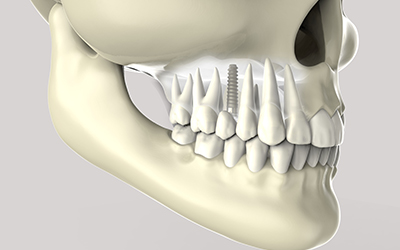Posted on Mar 25, 2024
How Do Dental Fillings Work?
A+ A- A Main Content
Cavities form when bacteria in the mouth produce acids that attack the enamel. If left untreated, these cavities penetrate the teeth’s deeper layers, leading to dental pain, infection, and potential tooth loss. Dental fillings help restore the damaged tooth by filling in the cavities, preventing further decay, and preserving the tooth’s structure.
This is why understanding how dental fillings work allows you to alleviate any concerns you might have about the procedure.
Types of Dental Fillings
- Composite Fillings: Composed of glass particles and plastic resin, these fillings blend seamlessly with natural teeth due to their natural color. They are often used for front teeth or more visible areas due to their aesthetic appeal.
- Amalgam Fillings: These are made from different metals, including copper, tin, mercury, silver, and copper. Amalgam fillings are cost-effective and durable, making them popular for back teeth.
- Glass Ionomer Fillings: These fillings are made of a type of glass material and acrylic. They prevent further decay by releasing fluoride. However, they are less durable than composite or amalgam fillings.
- Ceramic Fillings: Made of porcelain, ceramic fillings are tooth-colored and resistant to staining. They are an aesthetically pleasing option but tend to be more expensive than other types.
- Gold Fillings: Though less common today, these fillings are known for their durability and longevity. They are expensive and stand out visually, which can be a drawback for some patients.
The Dental Filling Procedure
Step #1
Diagnosis
First, the dentist examines your teeth. They might use X-rays to identify how severe the decay is.
Step #2
Administering Anesthesia
Before starting the procedure, the dentist administers anesthesia to numb your tooth and the surrounding area, ensuring a pain-free experience.
Step #3
Decay Removal
The dentist then removes the tooth’s decayed portion using a laser or drill, leaving a clean space for the dental filling.
Step #4
Placing the Dental Filling
The selected filling material is placed into the prepared cavity. The dentist carefully shapes and contours the filling to ensure it fits seamlessly with the natural tooth structure.
Step #5
Curing (If Applicable)
In the case of composite or ceramic fillings, a blue wand is used to harden and bond the material to the tooth.
Step #6
Polishing
The dentist polishes the filling to make it smooth and aesthetically pleasing.
Step #7
Final Adjustments
Your bite may be checked to ensure that it’s comfortable and any necessary adjustments are made.
If you suspect a cavity or experience tooth pain, consult with your dentist promptly to address the issue and explore suitable treatment options, including the possibility of a dental filling.
At Meadows Family Dentistry, we prioritize oral health, offering quality dental solutions that restore and enhance your beautiful smile. For more information, call (303) 660-5576.
















 (303) 660-5576
(303) 660-5576 smile@meadowsfamilydentistry.com
smile@meadowsfamilydentistry.com 3740 Dacoro Lane, Suite #115
3740 Dacoro Lane, Suite #115